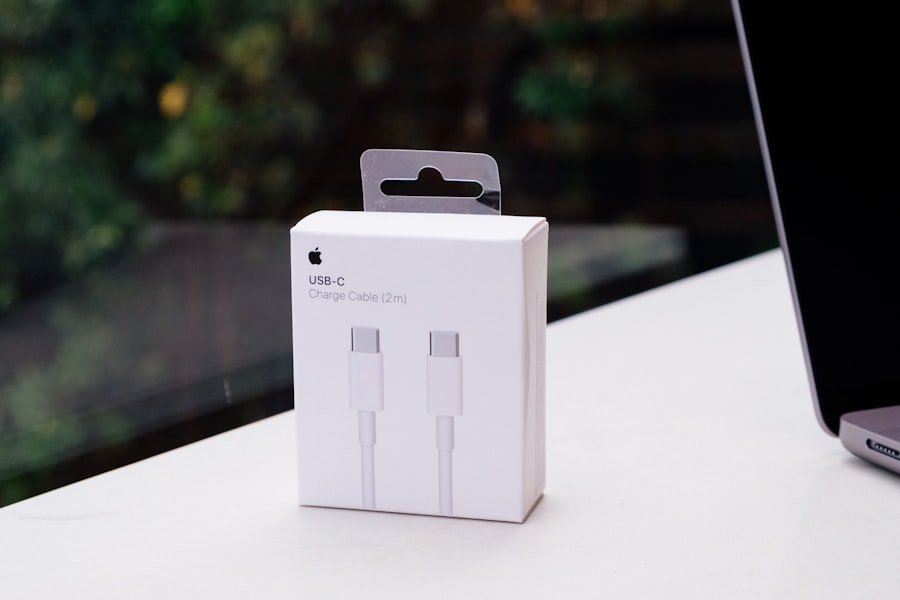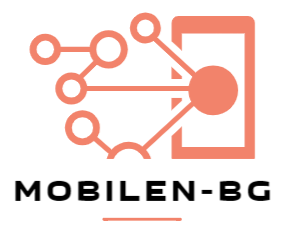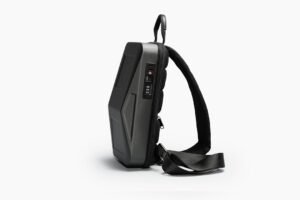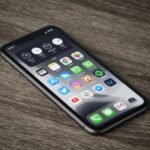USB cables, or Universal Serial Bus cables, are a type of cable that is used to connect various devices to a computer or other electronic devices. They are an essential component in modern technology as they allow for the transfer of data and power between devices. USB cables have become the standard for connecting devices such as smartphones, tablets, cameras, printers, and more to computers and other devices.
The importance of USB cables in modern technology cannot be overstated. They have revolutionized the way we connect and interact with our devices. USB cables provide a convenient and efficient way to transfer data and charge devices. They have replaced older connection methods such as serial and parallel ports, which were slower and less versatile.
USB cables also play a crucial role in the development of new technologies. The introduction of USB-C cables, for example, has allowed for faster data transfer speeds and the ability to charge devices more quickly. As technology continues to advance, USB cables will continue to evolve and adapt to meet the needs of consumers.
Key Takeaways
- USB cables are important for connecting devices and transferring data and power.
- There are different types of USB cables, including Type-A, Type-B, and Type-C.
- USB cable connectors include Standard-A, Standard-B, Mini-B, Micro-B, and Type-C.
- Choosing the right USB cable length depends on your needs and the distance between devices.
- USB cable speeds vary from USB 1.0 to USB 3.2, with faster speeds allowing for quicker data transfer.
USB Cable Types: Understanding the different types of USB cables available.
There are several different types of USB cables available, each with its own unique features and uses. The most common types include USB-A, USB-B, USB-C, Mini-USB, and Micro-USB.
USB-A is the most familiar type of USB cable connector. It is rectangular in shape and is commonly found on computers and other devices. USB-A cables are used for data transfer and charging purposes.
USB-B connectors are typically found on printers, scanners, and other peripheral devices. They are square-shaped with two beveled corners and are larger than USB-A connectors. USB-B cables are used to connect these devices to computers or other devices.
USB-C is the newest type of USB cable connector and is becoming increasingly popular. It is a small, reversible connector that can be plugged in either way, making it more convenient to use. USB-C cables support faster data transfer speeds and can also deliver more power, making them ideal for charging devices.
Mini-USB and Micro-USB connectors are smaller versions of USB-A connectors. They are commonly used for connecting smartphones, cameras, and other portable devices to computers or chargers. Mini-USB and Micro-USB cables are gradually being phased out in favor of USB-C cables.
USB Cable Connectors: A comprehensive guide to USB cable connectors.
USB cable connectors come in various shapes and sizes, each designed for specific purposes. Understanding the different types of USB cable connectors can help you identify and use them correctly.
The most common types of USB cable connectors include Type-A, Type-B, Type-C, Mini-USB, and Micro-USB.
Type-A connectors are rectangular in shape and are commonly found on computers and other devices. They have four pins and are used for data transfer and charging purposes.
Type-B connectors are square-shaped with two beveled corners. They are typically found on printers, scanners, and other peripheral devices. Type-B connectors have four pins and are used to connect these devices to computers or other devices.
Type-C connectors are small, reversible connectors that can be plugged in either way. They have 24 pins and support faster data transfer speeds and higher power delivery. Type-C connectors are becoming increasingly popular due to their convenience and versatility.
Mini-USB connectors are smaller versions of Type-A connectors. They have five pins and are commonly used for connecting smartphones, cameras, and other portable devices to computers or chargers.
Micro-USB connectors are even smaller than Mini-USB connectors. They have five pins and are commonly used for connecting smartphones, tablets, and other portable devices to computers or chargers. Micro-USB connectors are gradually being replaced by Type-C connectors.
USB Cable Lengths: How to choose the right USB cable length for your needs.
| USB Cable Lengths | How to choose the right USB cable length for your needs |
|---|---|
| 1 foot | Great for charging devices close to a power source or connecting devices that are close together |
| 3 feet | Good for connecting devices that are a bit further apart, such as a phone and a computer |
| 6 feet | Useful for connecting devices that are farther apart, such as a printer and a computer |
| 10 feet | Great for connecting devices that are far apart, such as a TV and a streaming device |
| 15 feet or longer | Best for connecting devices that are far apart and require a lot of mobility, such as a VR headset or a camera |
Choosing the right USB cable length is important to ensure that you can comfortably connect your devices without any restrictions. There are several factors to consider when choosing the appropriate USB cable length.
Firstly, consider the distance between your devices. Measure the distance between the USB ports on your devices to determine how long of a cable you will need. It is always better to choose a slightly longer cable than you think you will need, as it allows for more flexibility in positioning your devices.
Secondly, consider the purpose of the USB cable. If you are using the cable for charging purposes, a shorter cable may be more convenient as it reduces clutter and is easier to manage. However, if you are using the cable for data transfer or connecting devices that are further apart, a longer cable may be necessary.
Lastly, consider the environment in which the USB cable will be used. If you are using the cable in a stationary setup, such as connecting a printer to a computer on a desk, a longer cable may be more suitable. However, if you are using the cable in a portable setup, such as connecting a smartphone to a power bank, a shorter cable may be more practical.
Recommended USB cable lengths vary depending on the device and purpose. For charging purposes, shorter cables ranging from 1 to 3 feet are commonly used. For data transfer or connecting devices that are further apart, longer cables ranging from 6 to 10 feet or even longer may be necessary.
USB Cable Speeds: Understanding the different USB cable speeds and their capabilities.
USB cables come in different speeds, each offering different capabilities in terms of data transfer speeds and power delivery. Understanding the different USB cable speeds can help you choose the right cable for your needs.
The most common USB cable speeds include USB 1.0, USB 2.0, USB 3.0, USB 3.1, and USB 3.2.
USB 1.0 is the original USB standard and offers a maximum data transfer rate of 12 Mbps (megabits per second). It is suitable for basic tasks such as connecting keyboards, mice, and printers.
USB 2.0 is an improved version of USB 1.0 and offers a maximum data transfer rate of 480 Mbps. It is suitable for most devices and is commonly used for connecting smartphones, cameras, and other portable devices to computers.
USB 3.0, also known as SuperSpeed USB, offers a maximum data transfer rate of 5 Gbps (gigabits per second). It is significantly faster than USB 2.0 and is ideal for transferring large files or streaming high-definition video.
USB 3.1, also known as SuperSpeed+ USB, offers a maximum data transfer rate of 10 Gbps. It is twice as fast as USB 3.0 and is suitable for demanding tasks such as connecting external hard drives or SSDs.
USB 3.2 is the latest USB standard and offers even faster data transfer speeds. It supports two-lane operation, allowing for a maximum data transfer rate of 20 Gbps. USB 3.2 cables are backward compatible with previous USB standards.
USB Cable Compatibility: Ensuring your USB cable is compatible with your device.

Ensuring that your USB cable is compatible with your device is crucial to ensure proper functionality and prevent any compatibility issues. There are several ways to check USB cable compatibility.
Firstly, check the type of USB connector on your device. Most devices will have a specific type of USB connector that they are designed to work with, such as Type-A, Type-B, Type-C, Mini-USB, or Micro-USB. Make sure that the USB cable you choose has the corresponding connector that matches your device.
Secondly, check the USB standard supported by your device. USB cables come in different speeds, as mentioned earlier, and it is important to choose a cable that matches the USB standard supported by your device. For example, if your device supports USB 3.0, make sure to choose a USB 3.0 cable for optimal performance.
Lastly, consider any additional features or requirements of your device. Some devices may require specific features or specifications in a USB cable, such as support for fast charging or data transfer rates. Check the specifications of your device and choose a USB cable that meets those requirements.
Common compatibility issues with USB cables include using the wrong type of connector or using a cable that does not support the required USB standard. To resolve these issues, simply choose a USB cable that is compatible with your device based on the factors mentioned above.
USB Cable Maintenance: Tips for maintaining and extending the life of your USB cable.
Proper maintenance of USB cables is important to ensure their longevity and prevent any issues with connectivity or performance. Here are some tips for maintaining and extending the life of your USB cables.
Firstly, handle your USB cables with care. Avoid pulling or yanking on the cable when disconnecting it from a device or charger. Instead, hold onto the connector and gently pull it out. This helps prevent any strain on the cable and reduces the risk of damaging the connectors.
Secondly, store your USB cables properly when not in use. Avoid wrapping them tightly or bending them at sharp angles, as this can cause damage to the internal wires. Instead, loosely coil the cable and secure it with a twist tie or Velcro strap to prevent tangling.
Thirdly, avoid exposing your USB cables to extreme temperatures or moisture. Excessive heat or cold can damage the insulation and internal wires of the cable, while moisture can cause corrosion on the connectors. Store your cables in a cool, dry place to prevent any damage.
Cleaning your USB cables regularly can also help maintain their performance. Use a soft, lint-free cloth to gently wipe the connectors and cable to remove any dust or debris. Avoid using harsh chemicals or abrasive materials, as they can damage the connectors or insulation.
If you notice any signs of damage or wear on your USB cable, such as frayed wires or loose connectors, it is important to repair or replace the cable. Continuing to use a damaged cable can lead to connectivity issues or even damage your devices.
USB Cable Accessories: Useful USB cable accessories to enhance your experience.
There are several useful USB cable accessories available that can enhance your experience and make it more convenient to use your devices. Here are some popular USB cable accessories:
USB hubs: USB hubs allow you to expand the number of USB ports on your computer or other devices. They are useful for connecting multiple devices that require USB connections, such as keyboards, mice, printers, and more.
USB adapters: USB adapters allow you to convert one type of USB connector to another. For example, if you have a device with a Type-C connector but only have a Type-A cable, you can use a Type-C to Type-A adapter to connect the device.
USB extenders: USB extenders allow you to extend the length of your USB cable. They are useful when you need to connect devices that are further apart or when you need more flexibility in positioning your devices.
USB chargers: USB chargers are used to charge devices that have a USB port. They come in various forms, such as wall chargers, car chargers, and power banks. USB chargers are essential for keeping your devices powered up on the go.
When choosing USB cable accessories, consider the specific needs of your devices and how you plan to use them. For example, if you frequently need to connect multiple devices to your computer, a USB hub may be a useful accessory. If you travel often and need to charge your devices on the go, a portable USB charger or power bank may be more suitable.
USB Cable Buying Guide: How to choose the best USB cable for your needs.
Choosing the best USB cable for your needs can be overwhelming due to the wide variety of options available. Here are some factors to consider when buying USB cables:
Firstly, consider the type of USB connector required by your devices. Check the specifications of your devices to determine whether they require a Type-A, Type-B, Type-C, Mini-USB, or Micro-USB connector. Make sure to choose a cable that has the corresponding connector.
Secondly, consider the purpose of the USB cable. Are you using it for charging purposes, data transfer, or both? If you are using it for charging purposes, consider the power requirements of your devices. Some devices may require a cable that supports fast charging or higher power delivery.
Thirdly, consider the length of the USB cable. Measure the distance between your devices to determine how long of a cable you will need. As mentioned earlier, it is always better to choose a slightly longer cable than you think you will need to allow for more flexibility in positioning your devices.
Lastly, consider the quality and durability of the USB cable. Look for cables that are made from high-quality materials and have sturdy connectors. Cables with reinforced insulation and strain relief are more durable and less prone to damage.
Recommended USB cables vary depending on the device and purpose. For charging purposes, cables that support fast charging or higher power delivery are recommended. For data transfer or connecting devices that are further apart, cables that support faster data transfer speeds are recommended.
Wrapping up the ultimate guide to USB cables.
In conclusion, USB cables are an essential component in modern technology as they allow for the transfer of data and power between devices. Understanding the different types of USB cables, connectors, lengths, speeds, compatibility, maintenance, accessories, and buying considerations can help you choose the right USB cable for your needs.
USB cables have revolutionized the way we connect and interact with our devices. They provide a convenient and efficient way to transfer data and charge devices. As technology continues to advance, USB cables will continue to evolve and adapt to meet the needs of consumers.
When choosing a USB cable, consider factors such as the type of connector required by your devices, the purpose of the cable, the length needed, the speed required, the compatibility with your devices, and the quality and durability of the cable. By choosing the right USB cable for your devices, you can ensure optimal performance and functionality.
If you’re in need of a reliable USB-C cable, look no further than the Etilik 2-Pack 3ft USB-C Cable. This cable is not only durable and long-lasting, but it also supports fast charging and data transfer speeds. Whether you need to charge your smartphone or transfer files between devices, this USB-C cable has got you covered. Don’t settle for subpar cables that break easily or have slow charging speeds. Upgrade to the Etilik 2-Pack 3ft USB-C Cable for all your charging and data transfer needs. Check out the article here for more information.









